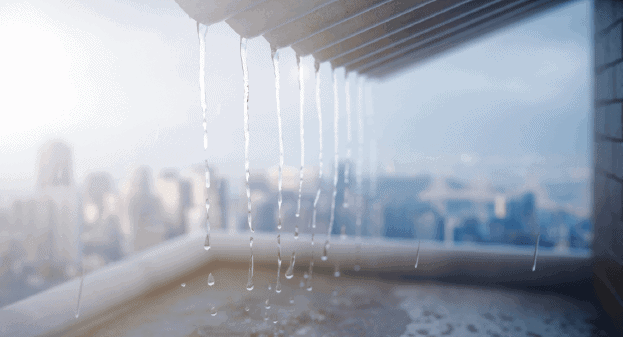If you’re a property or facility manager responsible for overseeing a property, it’s important to understand the dangers that moisture can pose to your asset and operations. Water can cause extensive damage, leading to costly repairs, downtime, and life or health safety issues.
In this blog post, we’ll discuss 6 tips for waterproofing that will help protect your property against moisture-related damage.
Maintain Your Existing Waterproofing Systems
One of the most important things you can do to protect your property from water damage is to ensure that existing waterproof assemblies are regularly maintained. This includes traffic coatings on all elevated conditions such as balconies, parking garages, podium decks, patios, and planters.
It is not enough to waterproof and forget, you must maintain your investment with regular observations to identify the useful life of your protective and waterproof coatings. Two of the main purposes of waterproofing is to protect the structural components of your building and prevent health hazards such as mold and mildew growth. Without proper maintenance to your existing moisture prevention systems, you are putting both your property’s structural integrity and tenants’ health at risk.
Check For Cracks On The Exterior Of Your Property
Another important tip for waterproofing your property is to have any cracks or openings sealed in your building’s exterior. These cracks can allow water to seep into your building. When water infiltrates, it can lead to mold growth and other moisture-related damage. Be sure to check the exterior of your building regularly for any cracks or openings, and have them repaired by a waterproofing expert as soon as possible.
Apply a Sealer to Waterproof Your Exterior Walls
It is common knowledge that you should paint siding and stucco to prevent water intrusion and preserve the substrate integrity. But did you know that you should always moisture lock your cementitious facades as well?
Brick, stone, concrete, and other porous wall surfaces require waterproofing treatments as well to ensure your building is leak free. This doesn’t mean you have to change the appearance either, there are treatments that are clear and penetrate the pores of the surface leaving your facade looking natural at the same time as protected against the elements and water intrusion.
Waterproofing Options
There is not a one size fits all approach when it comes to waterproofing your building. There are many options to consider, and it all comes down to your properties unique conditions and assemblies that will determine the best solution. See the below common types of waterproofing conditions to provide you a small understanding of the possibilities.
• Positive side waterproofing. This refers to the exterior side.
• Negative side waterproofing. This refers to the interior side.
• Between slab waterproofing. This refers to waterproofing you cannot see that is under a topping slab but on top of the structural slab for example.
• Blind side waterproofing. This refers to waterproofing that was applied to lagging prior to the building construction.
• Post applied waterproofing. This refers to waterproofing that was applied to the building in a back-filled condition.
• Hot applied waterproofing. This refers to asphalt-based waterproofing that are typically applied to a between slab condition and require compatible repair materials.
• Cold applied waterproofing. Most typically a polyurethane, bitumen based, asphaltic, acrylic, PMMA, or other common liquid membrane that do not require special equipment or heating.
• Sheet applied. Referring to sheets’ vs liquid membranes. Most commonly asphalt based.
• And so much more….
Regularly Inspect Your Property for Signs of Water Damage
Be sure to regularly inspect your property for any signs of moisture damage. If you see any water stains, concrete damage, mold growth, cracks, rusted steel staining in your garage, or smell any musty odors, be sure to investigate the source of the problem. If you are unable to identify the water source, it is best to contact an expert to conduct a site observation.
Commercial property inspections can also be a great way to catch any moisture-related problems early before they have a chance to cause extensive damage. Deferred or reactive maintenance can be a costly mistake. Whereas an observation by an expert water proofer is typically free and will set you up for success to avoid unnecessary costs and safety hazards.
Know The Experts
Finally, it is not enough to have a handy man, roofer, or painter handling your waterproofing needs. The structural components of your building can account for up to 75% of your building costs. Incorrectly applied systems can result in wasted time and money. This can be avoided by using industry experts who understand all the different types of moisture prevention solutions and where they should be appropriately used.
By following these 6 tips, you can help to protect your property from incurring costly moisture-related damage.
For more information on waterproofing, or to schedule a free site observation and consultation with our team of experts, contact DCPS today. Our team is ready to answer any of your questions and help you find the best solution for protecting your property from moisture related issues.



